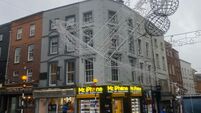Police ‘negligent’ in Nelson murder
The North’s police ombudsman Nuala O’Loan’s investigation accused the RUC of an inadequate assessment of the risk facing the lawyer, and subsequent actions.
Abusive leaflets containing Ms Nelson’s personal details and an anonymous letter warning she was to be targeted — which were passed to the Northern Ireland Office months before she was killed by loyalists in March 1999 — were also never requested by police, the probe found.













